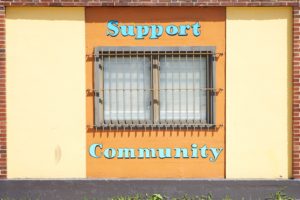Three years have elapsed since the onset of COVID-19, and it is evident that the timing of mitigation efforts shaped the trajectory and severity of national outbreaks in Latin America.1 Although countries in the region share many similarities in their economic, health, and political systems, they had very diverse response strategies to handle the pandemic. This can be seen with Brazil having the highest pandemic mortality rate, while Chile had one of the lowest rates of mortality. ((Mendoza, J. “COVID-19 deaths in Latin America 2022, by country.” Statista, 28 February 2022, https://www.statista.com/statistics/1103965/latin-america-caribbean-coronavirus-deaths/. Accessed 4 Mar. 2022.)) While Brazil was slow to respond to the pandemic–and finally did after public pressure–Chile adopted and implemented approaches quickly. Response to the pandemic was also diverse in territories belonging to ‘powerhouse’ countries. This can be seen in an often overlooked territory of France, known as French Guiana. Brazil, Chile, and French Guiana are three Latin American examples that can be analyzed due to their varying response strategies. Their differences in leadership, policy measures, and health systems are what contributed to the consequences of containment of the COVID-19 virus.1
Brazil found itself amidst a pandemic with a new president, whose popularity had been declining, along with major investigations of corruption scandals.2 These political tensions, coupled with conflicting public announcements, further deteriorated the people’s trust in Brazilian politicians. Without vital support of the public, public health policy would cease to exist in the political space. State governors, mayors, and Ministry of Health officials urged the public to stay home and maintain social distancing. However, the president dismissed the danger posed by the virus and encouraged the population to continue to work to avoid economic collapse.2 With the disease becoming more prominent, controlling the spread made it difficult at the national level.
Conversely, the Chilean president announced and implicated many COVID-19 protocols ten days after the first confirmed case. A group of experts in Chile even identified challenges that needed to be addressed when it came to the pandemic. As a result, many approaches to decrease the spread of the virus were implemented.2 Chile’s objective was clear: mitigate the spread; Brazil’s objective was unclear, with its president dismissing COVID-19 as a ‘measly cold’ and arguing with its Health Minister over protocols.3
The Chilean public policy response, by contrast, was rapid, thorough, and evidence-based.4 Since Chile had its scientific, medical, and government organizations assembled, various measures were gradually adopted to improve surveillance and better manage the pandemic according to international recommendations.2 This meant schools were closed, massive gatherings were prohibited, and curfews were implemented.5 These protocols went into effect within three weeks of the first case.4 The country also had a step-by-step plan to reopen in mid-July, showing how well prepared they were.5 Chile’s adopted measures were decided centrally, whereas Brazil–being influenced by the United States–left many policy measures up to states and cities with no known attempts to achieve a nationally consistent approach.5 In Brazil, only social distancing was recommended by the federal government; no quarantine measures had been mandated.5 Since the policy measures were not coordinated centrally, this made the virus difficult to control. Roughly three weeks after Chile implemented federal actions, similar policies were implemented in Brazil, however not quick enough to mitigate the epidemic.4 By the end of July, Brazil negligently opened borders to international air travelers.5
From a health systems standpoint, it is evident that Chile focused on population members’ responsibilities to comply with sanitary measures. ((Garcia, Patricia et al. “Perspective Piece: COVID-19 Response in Latin America.” The American Society of Tropical Medicine and Hygiene 103(5), 2020: 1765-1772. doi:10.4269/ajtmh.20-0765)) As for Brazil, only a few public health or disease control decisions were made at the central level3. When comparing the two countries, Chile had more doctors and nurses (2.5 per 100,000 hb. and 2.7 per 1,000 hb. respectively) than Brazil (1.8 per 100,000 hb. and 1.5 per 1,000 hb. respectively) which could be a main driver for Chile having more of a public health approach4. Brazil, however, had more hospital and ICU beds and ventilators than Chile (2.3 vs. 2.1 per 1,000 hb., 17.0 vs. 5.2 per 100,000 hb., and 29.6 vs 6.8 per 100,000 hb. respectively) 4; but since Brazil did not focus on a population approach or a rapid response, COVID-19 deaths were the highest in Latin America.6 Although Brazil has a national health system with comprehensive free access to healthcare (100% population covered), and Chile has a mixed system in terms of health insurance (78% public/14.4% private), both countries range the same regarding health care expenditures; yet they have total opposite COVID-19 outcomes.5 Both countries also spend a larger fraction of the GDP on health than the Organization for Economic Co-operation and Development (OECD) average4. However, spending more does not equate to better health. Preventative measures imposed early can mobilize health systems to meet the threat, as seen with Chile7 .
Just north of Brazil is another Latin American country–French Guiana. They struggled with a surge of COVID-19 cases. Health officials believed that many of the cases had come over from Brazil.8 Due to it being a French territory, the area is often overlooked; however it also raises concerns for these other ‘powerhouse’ countries not doing much when it comes to aiding their own territories. The leadership and health systems for this country have failed them, exposing deep economic and racial inequalities.8 Not only did hospitals on the French mainland receive emergency aid quickly, but they also had more practitioners than French Guiana with the capacity to perform procedures quickly.8 Nonetheless, this country is still part of Latin America and should not be overshadowed due to it belonging to France, particularly when it comes to aid.
One potential strategy could involve the establishment of a dedicated regional organization in Latin America, aimed at promoting efficient and effective cooperation and economic-political dialogue. Despite the creation of the Union of South American Nations in 2008, its lifespan was cut short due to the worsening crisis in Brazil, limiting its effectiveness.9 By fostering regional collaboration and self-reliance, countries in Latin America would be better equipped to address challenges internally, rather than relying on aid from other countries outside of Latin America during times of crisis, as observed during the COVID-19 pandemic. While the impact of the pandemic on Chile, Brazil, and French Guiana remains uncertain, notable disparities exist in the leadership approaches, policy measures, and health systems of these nations. It is imperative for national governments to learn from global experiences and adopt evidence-based policies that can effectively mitigate the loss of lives.7
- A Continent Divided: Covid-19 Response in the Americas - August 8, 2023
- Maldives: Saving Lives, Saving the Future - July 18, 2022
- Frenk, Julio, et al. “Covid-19 in the Americas: A Case in Contrasts.” LATIN AMERICA ADVISOR A DAILY PUBLICATION OF THE DIALOGUE, 5 May 2020, www.thedialogue.org/analysis/covid-19-in-the-americas-a-case-in-contrasts/. Accessed 4 Mar. 2022. [↩] [↩]
- Garcia, Patricia et al. “Perspective Piece: COVID-19 Response in Latin America.” The American Society of Tropical Medicine and Hygiene 103(5), 2020: 1765-1772. doi:10.4269/ajtmh.20-0765 [↩] [↩] [↩] [↩]
- Benítez, María Alejandra et al. “Responses to COVID-19 in five Latin American countries.” Health policy and technology vol. 9,4 (2020): 525-559. doi:10.1016/j.hlpt.2020.08.014 [↩]
- Frenk, Julio, et al. “Covid-19 in the Americas: A Case in Contrasts.” LATIN AMERICA ADVISOR A DAILY PUBLICATION OF THE DIALOGUE, 5 May 2020, www.thedialogue.org/analysis/covid-19-in-the-americas-a-case-in-contrasts/. Accessed 4 Mar. 2022. [↩] [↩] [↩]
- Benítez, María Alejandra et al. “Responses to COVID-19 in five Latin American countries.” Health policy and technology vol. 9,4 (2020): 525-559. doi:10.1016/j.hlpt.2020.08.014 [↩] [↩] [↩] [↩] [↩] [↩]
- Mendoza, J. “COVID-19 deaths in Latin America 2022, by country.” Statista, 28 February 2022, https://www.statista.com/statistics/1103965/latin-america-caribbean-coronavirus-deaths/. Accessed 4 Mar. 2022. [↩]
- Frenk, Julio, et al. “Covid-19 in the Americas: A Case in Contrasts.” LATIN AMERICA ADVISOR A DAILY PUBLICATION OF THE DIALOGUE, 5 May 2020, www.thedialogue.org/analysis/covid-19-in-the-americas-a-case-in-contrasts/. Accessed 4 Mar. 2022. [↩] [↩]
- Thompson, Ryan. “Facing a surge in cases, French Guiana asks Paris ‘where’s your help?.'”Euronews, 23 July 2020, www.euronews.com/2020/07/23/facing-a-surge-in-cases-french-guiana-asks-paris-where-s-your-help. Accessed 4 Mar. 2022. [↩] [↩] [↩]
- Merke, Federico et al. “Reimagining Regional Governance in Latin America.” Carnegie Endowment for International Peace, 24 June 2021, carnegieendowment.org/2021/06/24/reimagining-regional-governance-in-latin-america-pub-84813. Accessed 4 Mar. 2022. [↩]




